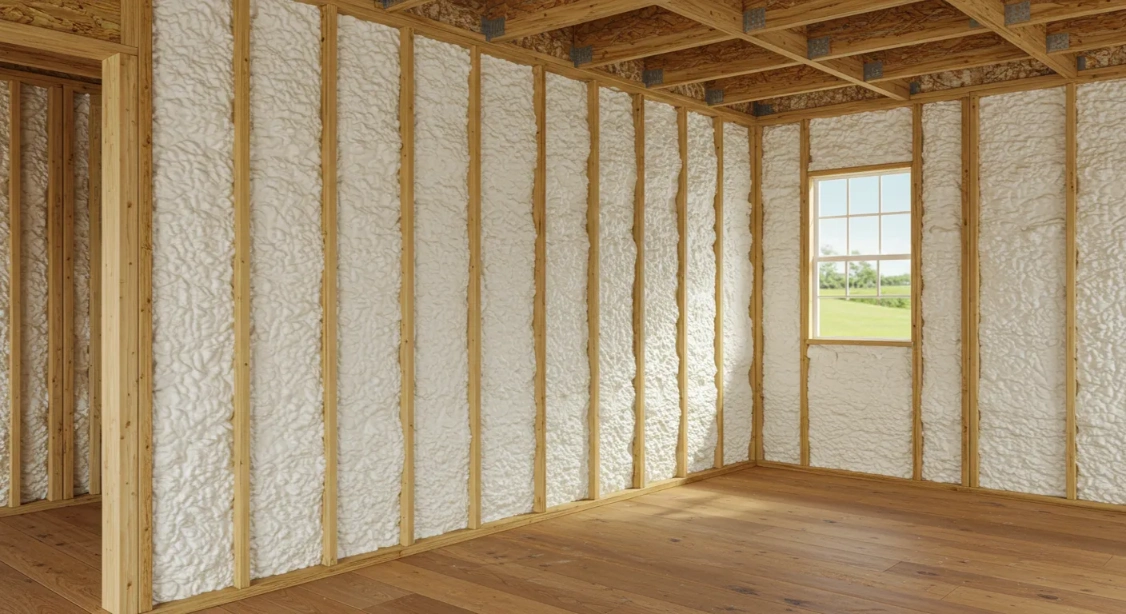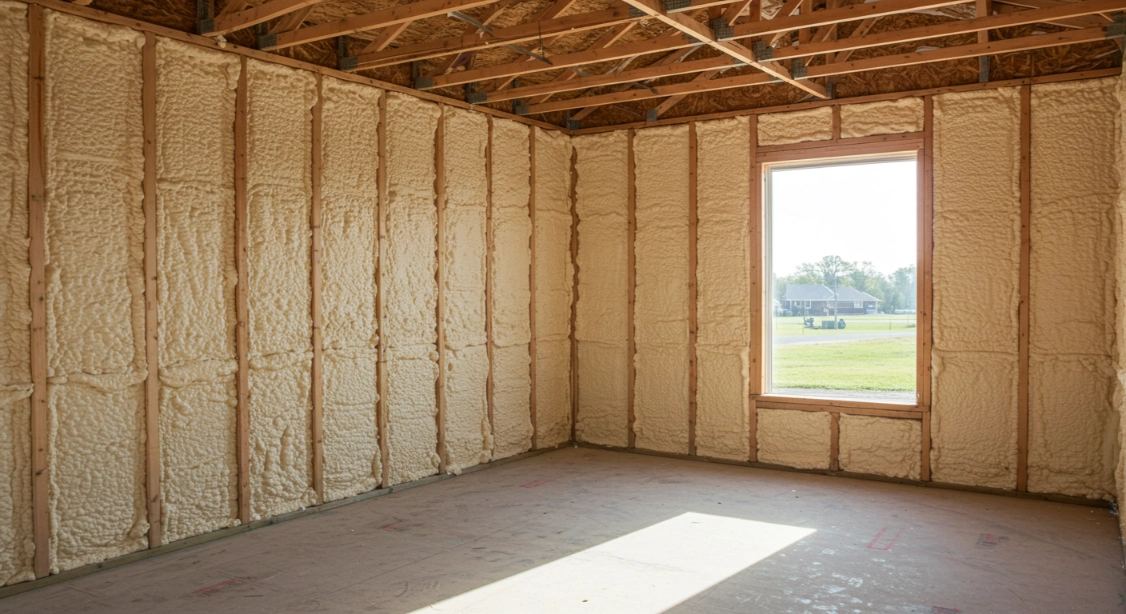Spray foam insulation minimizes energy waste by creating a high-performance air seal that reduces the load on heating and cooling systems. Its dense, closed-cell structure restricts heat flow more effectively than traditional insulation materials, leading to lower utility consumption over time.
Compared to fiberglass or cellulose, spray foam insulation provides longer service life, moisture resistance, and reduced emissions during operation. When installed properly, it supports LEED certification efforts and complies with modern energy codes. Stellrr Insulation & Spray Foam applies both open and closed cell spray foam using practices that prioritize material efficiency and long-term environmental impact.
How Spray Foam Contributes to Energy Efficiency
In Central Texas and similar regions with hot summers and variable winters, reducing thermal transfer is critical. Spray foam’s air-sealing properties help stabilize indoor temperatures, cutting reliance on HVAC systems year-round. Unlike batt insulation, spray foam expands on contact, filling irregular gaps and cavities that allow energy leakage.
Bonus Tip: In high-humidity climates like Austin, closed cell foam also acts as a vapor barrier, reducing the risk of mold in attics and crawl spaces.
Technical Data and Environmental Specifications
| Specification | Open Cell Spray Foam | Closed Cell Spray Foam |
|---|---|---|
| R-Value per Inch | R-3.5 to R-3.9 | R-6.5 to R-7 |
| Air Seal Performance | High | Very High |
| Vapor Barrier | No | Yes |
| Water Resistance | Low | High |
| Material Density | ~0.5 lb/ft^3 | ~2.0 lb/ft^3 |
| Lifespan | 20–30 years | 30–50 years |
| Global Warming Potential (GWP)* | <1 with HFO blowing agents | <1 with HFO blowing agents |
| Post-Installation Emissions | Negligible after cure | Negligible after cure |
Sources: U.S. Department of Energy, EPA SNAP Program
Comparison With Other Insulation Materials
| Feature/Metric | Spray Foam | Fiberglass Batts | Cellulose |
|---|---|---|---|
| R-Value per Inch | 3.5–7.0 | 2.9–3.8 | 3.2–3.8 |
| Air Infiltration Control | Excellent | Poor | Moderate |
| Mold Resistance | High (closed cell) | Low | Moderate |
| Longevity | 20–50 years | 10–25 years | 20–30 years |
| Recyclability | Low | Moderate | High |
| Installation Impact | Expands to fill gaps | Requires precise cuts | Blown-in, less precise |

Practical Benefits From Field Experience
Crews report that attic installations using closed cell spray foam in older homes can cut cooling loads. Spray foam also improves structural rigidity—an added benefit in areas prone to shifting soil like the Hill Country.
Bonus Tip: Apply open cell spray foam in interior walls to reduce sound transmission while keeping costs lower than closed cell options.
Things to Consider Before Making a Decision
- Building Envelope Type: Tight, sealed homes benefit more from spray foam. Loosely constructed homes may require structural prep.
- Budget Range: Closed cell foam offers more performance but costs more per square foot.
- Climate Zone: In humid or flood-prone areas, moisture control is essential—favor closed cell insulation.
- Long-Term Use: For permanent residences or facilities, spray foam’s durability offsets its upfront investment.
Key Services for Eco-Conscious Insulation Projects
Stellrr Insulation & Spray Foam provides services aligned with sustainability goals:
- Open Cell Spray Foam: Ideal for interior walls and large surface areas with moderate insulation needs.
- Closed Cell Spray Foam: Best for moisture-prone zones like crawl spaces or exterior walls.
- Attic Insulation: Increases home energy efficiency by sealing off one of the largest heat loss areas.
- Insulation Removal: Safe removal of outdated or inefficient insulation to prepare for modern upgrades.
Common Questions About Choosing Spray Foam
Does spray foam off-gas after installation?
No. Properly mixed and cured spray foam stops emitting gases within 24–72 hours.
Can it be applied in cold temperatures?
Application requires surface temperatures above 40°F. Technicians use thermal scanners to confirm conditions.
Is spray foam safe for homes with kids and pets?
Once cured, the material is inert and does not release harmful compounds.
How long does installation take?
A typical home takes 1–3 days depending on the project’s size and complexity.
Get Expert Insulation Guidance
For residential or commercial insulation in Central Texas, Stellrr Insulation & Spray Foam applies proven materials using experience-backed methods. Get answers for your specific needs by calling (512) 710-2839 or emailing info@stellrr.com.
FAQ
How do I maintain spray foam insulation?
Minimal maintenance is required. Inspect every few years for mechanical damage or moisture intrusion.
What’s the difference between open and closed cell foam?
Open cell is softer, cheaper, and better for sound dampening. Closed cell is denser, waterproof, and has a higher R-value.
Can I add spray foam over existing insulation?
In some cases, yes. A professional must assess whether the old material interferes with adhesion or moisture control.
Does spray foam support LEED certification?
Yes, when using low-GWP products and applying to areas with significant thermal improvement potential.
Will rodents or pests chew through spray foam?
Closed cell foam is not a food source, but it may be tunneled through. Proper sealing and pest exclusion methods should still be used.

